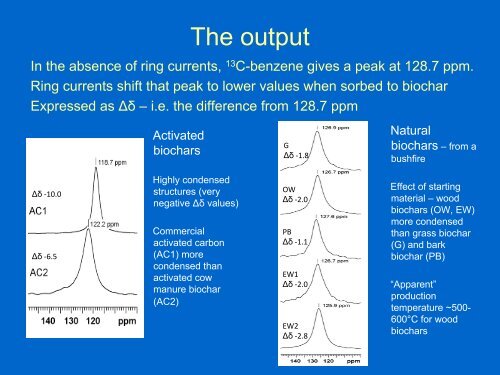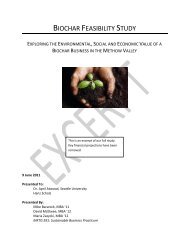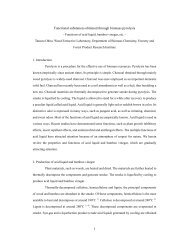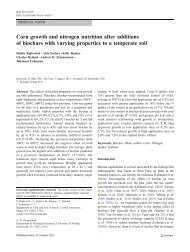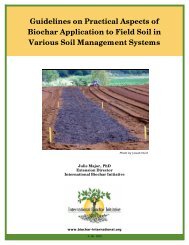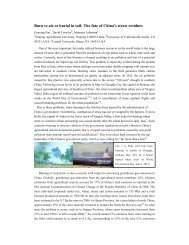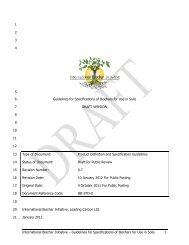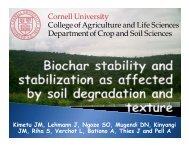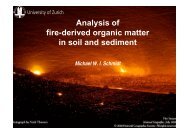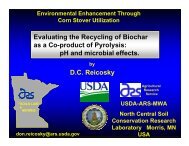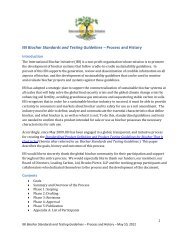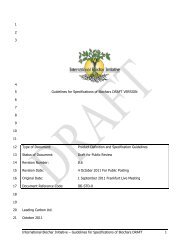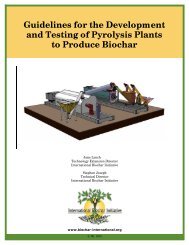A simple method for determining biochar condensation
A simple method for determining biochar condensation
A simple method for determining biochar condensation
Create successful ePaper yourself
Turn your PDF publications into a flip-book with our unique Google optimized e-Paper software.
The output<br />
In the absence of ring currents, 13 C-benzene gives a peak at 128.7 ppm.<br />
Ring currents shift that peak to lower values when sorbed to <strong>biochar</strong><br />
Expressed as Δδ – i.e. the difference from 128.7 ppm<br />
Activated<br />
<strong>biochar</strong>s<br />
G<br />
Δδ ‐1.8<br />
Natural<br />
<strong>biochar</strong>s –from a<br />
bushfire<br />
Δδ ‐10.0<br />
Δδ ‐6.5<br />
Highly condensed<br />
structures (very<br />
negative Δδ values)<br />
Commercial<br />
activated carbon<br />
(AC1) more<br />
condensed than<br />
activated cow<br />
manure <strong>biochar</strong><br />
(AC2)<br />
OW<br />
Δδ ‐2.0<br />
PB<br />
Δδ ‐1.1<br />
EW1<br />
Δδ ‐2.0<br />
EW2<br />
Δδ ‐2.8<br />
Effect of starting<br />
material – wood<br />
<strong>biochar</strong>s (OW, EW)<br />
more condensed<br />
than grass <strong>biochar</strong><br />
(G) and bark<br />
<strong>biochar</strong> (PB)<br />
“Apparent”<br />
production<br />
temperature ~500-<br />
600°C <strong>for</strong> wood<br />
<strong>biochar</strong>s


